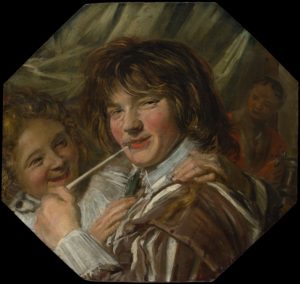When I was invited to a Christmas party last year, I was requested to “dress smartly and don’t bring any cider!”. Yet, even without this warning, good manners would have dictated that I leave the four-pack of Scrumpy Jack at the back of my fridge. For me, however, the incident also posed the question: why do we have associations with alcohol, indeed with all consumable substances, when in a social environment? Cost, packaging, advertising, quality, and taste admittedly dictate much of this formulation. But the more pertinent is how these are intermeshed with social convention, cultural practice, and the inherent heuristic knowledge of what constitutes an “appropriate” drink.


The cultural currency attached to certain intoxicating substances – that in effect determine their functions as status markers – is integral to modern discourse. Yet perhaps not so much as it was in the Renaissance. To become an acceptable “drink” (as contemporaries, indeed necessarily, referred to such things), respectable and secure associations had to be invested in it. The most common and effective way to do this was to impart it with that stable part of the early modern psyche – classical antiquity.
So it was with tobacco. The Scottish physician William Barclay likened his tobacco box and pipe to the bag and club of Hercules: modest arms with which he might defeat the world.1 Was this just rhetorical hyperbole? No doubt it was. Yet it adhered to established precedents in public discourse and threw him into the Jacobean paper war over the supposed benefits of the drug.
Like many others, Barclay tried to domesticate this new world discovery within a European cultural framework. He saw it in Galenic terms as “hot and dry in the second degree” and advantageous for clearing excess phlegm. This view at the time was contentious: might it not similarly dry out too much of the body’s natural fluids?
That medicine had ancient precedents opened up a discourse in other classical “disciplines”. This is shown in the comparison to Hercules that Barclay evoked in his introduction. Even the title of his text “Nepenthes” references the mythological wonder drug that Helena used to drown her sorrows and miseries. Yet in contrast to such opiate, the apparent effects of tobacco induced a more sociable feeling. Indeed, the allegations that it improved conversation and encouraged sociability were its supporters’ foremost reasons for evoking a classical past.
Like antiquity’s wine-fuelled symposium, tobacco could expedite social gatherings to converse, share ideas, and debate the very effects that the drug was believed to induce. It acted as a lubricant to rhetorical discourse. As Barclay wrote, ‘it is the only medicament in the world ordained by nature to entertaine good companie: insomuch that it worketh never so well, as when a it is given from man to man, as a pledge of friendshippe and amitie.’ The yardstick of civil society – communication – was therefore applied to the nicotine plant. (Indeed a fellow Scot James VI and I famously lamented how ‘it is become in place of a cure, a point of good fellowship, and he that will refuse to take a pipe of Tobacco among his fellowes… is accounted peevish and no good company’).2
Of course, the interpretation of tobacco in a classical and sociable context just reflected the times – the zeitgeist of the Renaissance and its emphasis of looking backwards to go forwards. Yet, that underlines how far it symbolised the fashions and discourse of the time. It was deemed by many to be sociable and appropriate, even if this was not always desirable for those currently holding political and social power.
What this all shows is that the consumption of tobacco is inextricably linked with contemporary mentalities, fashions, and beliefs. As anthropologists who have studied intoxicants have shown, an awareness of these contexts can help with better understanding the respective society under scrutiny. More broadly, for any study of the consumption of material culture, an approach which tries to understand how these were discussed at the time can be a highly illuminating exercise. As with the case of tobacco, it can show how key Renaissance concepts were invested onto them.
Alex Taylor
1 William Barclay Mr. of Art, and Doctor of Physicke, Nepenthes, or the Vertues of Tobacco (Edinburgh, 1614).
